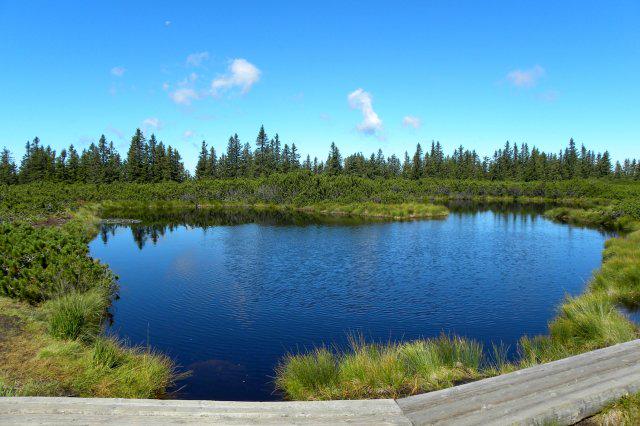
Among the fragrant fir forests of Slovenia’s Pohorje Range lies a series of wetlands and lakes. Lovrenc Moors and Lakes (“Lovrenško barje in jezera” in Slovenian) are not just a popular attraction for hikers; they also form one of the most unique ecosystems in Slovenia.
The moors are the largest wetlands in Slovenia and one of the most southerly in Europe. They formed about 8000 years ago when rainwater was trapped above an impermeable layer of silicate rock. The entire area is characterized by an exceptionally thick layer of peat – up to three meters deep in places. Of the 20 small lakes in the area, some are no bigger than ponds, but they are all unusually dark – almost black -- appearance, a result of the peat beneath.
But it is the vibrant life around the Lovrenc Moors that truly sets the area apart. The wetlands are a veritable treasure-trove of rare flora found only in such unique habitats – plants such as the Rannoch-rush and the rare, bisexual subspecies of the crowberry. Visitors can also spot two endangered dragonflies – the moorland hawker and the white-faced darter.
The flora and fauna of the Lovrenc Moors are featured on information panels located under a wooden observation tower at the center of the wetlands. Visitors can climb the tower to get a bird’s-eye-view the lakes and the marshes, or they can take a stroll on walkways connecting the observation tower with the surrounding woodlands – but they are never allowed to enter the fragile marshland itself.
Despite being a major tourist draw, the Lovrenc Moors are primarily a protected nature reserve. When scientists discovered that one of the walkways was damaging the area’s habitat, the path was closed and the surrounding plant life was allowed to return to its natural state. Authorities have come realize that the Lovrenc Moors will remain one of Slovenia’s most interesting areas only if its nature is allowed to thrive as it did for millennia -- with as little outside interference as possible.

































































